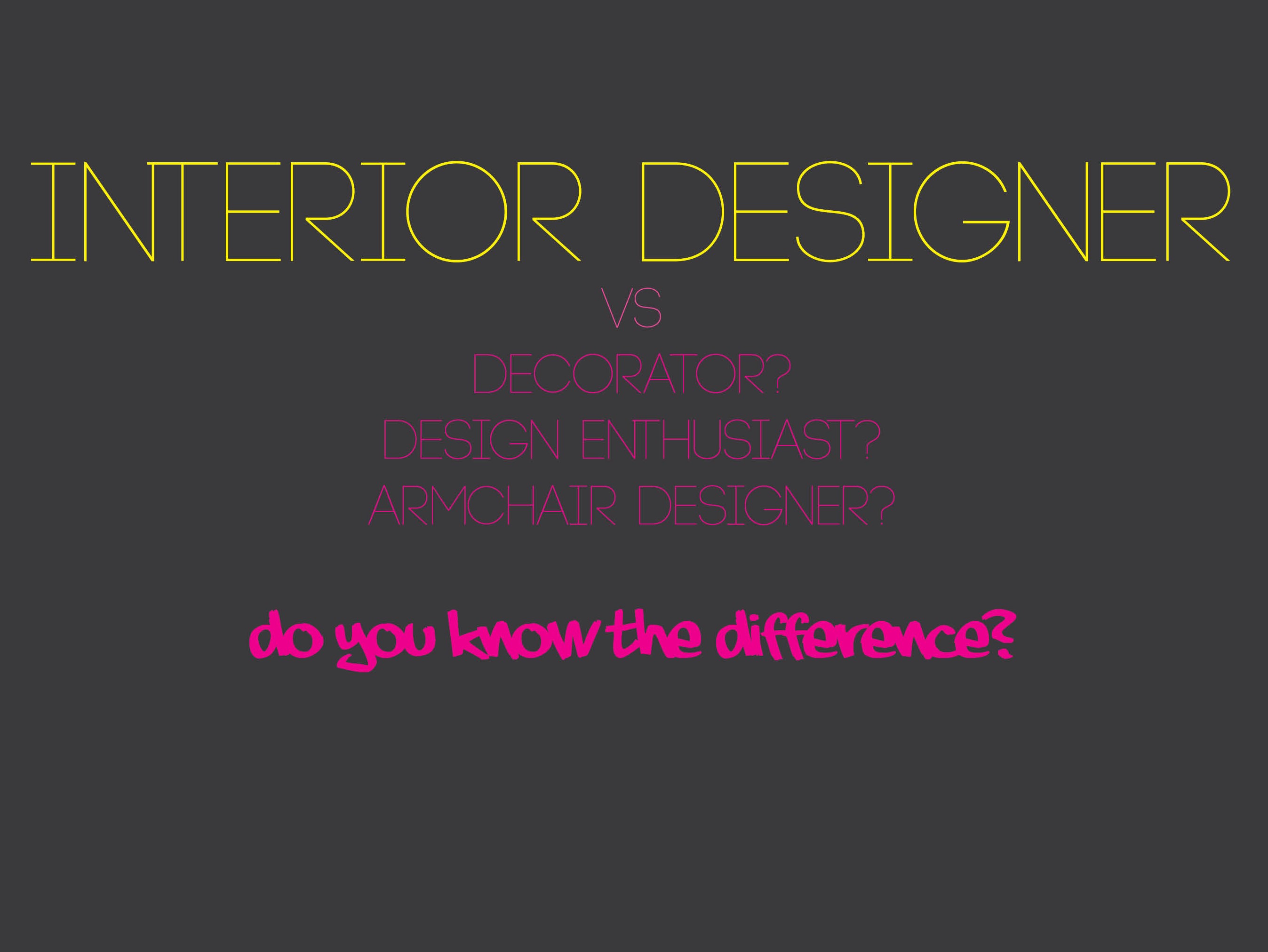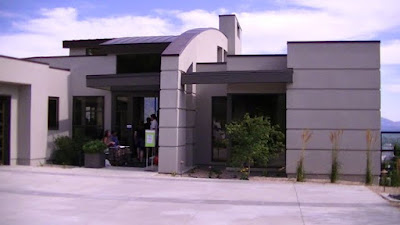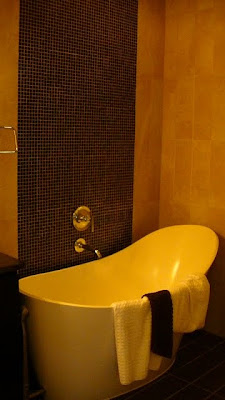 |
| Color Trends can be used for good or evil! This is GOOD! |
Fast forward to the next day in my Color Theory class. We were learning about color trends. If you are at all aware of the retail world, you will notice that certain colors pervade the market at any given time. I have often gone shopping for clothing and been frustrated that every single store I go to has the exact same four colors in every line of clothing, and with my luck, I look hideous in three of them. Or I will decide on a certain color scheme that I want to decorate a room in, and will be utterly unable to find any products--curtains, bedding, towels, etc--in that color scheme available at any mass retailer. Have you ever wondered where these colors come from? Who decides what colors we will all be stuck with for the next six months?
If you've seen "The Devil Wears Prada", you'll remember the great scene where Meryl Streep regales Anne Hathaway with the fashion history of her sweater's blue color.
There are literally groups of people whose job it is to create color trends. One such group we talked about in class is the Color Marketing Group. The CMG is a collection of people from all over the world, from all sorts of different trades, ranging from fashion or interior design to architects, automobile engineers, and social scientists. They convene twice a year and analyze popular culture, such as current movies and celebrities, economic conditions across the globe, psychological reactions to color, historical cycles, etc, and from that, they produce a list of colors that they predict will appeal to the popular masses in everything from clothing to cars. They can make these decisions up to five years in advance. Designers from all industries subscribe to their lists and use their suggestions when developing their new line of products. The colors will without fail first appear in women's fashion designs, first seen on the runway, then in mass retailers. The colors will then progress to being available in housewares: women love these colors in their clothes, and want to decorate their house with them. They then proceed through to children's clothing, and, last of all, the color trends make one last stop in men's clothing, once women are sick to death of them, before running their course and fading out of popularity.
 |
| Right on trend, but it feels lifeless and cold. |
 My teacher showed us the 2012 color chart produced by CMG. It was a display of probably fifty different color chips, and yes, it was pretty spot-on for what I've been seeing available. For instance, this year, literally one-third of the chart was neutrals--shades of white, grey and beige. Many of the remaining colors were bright accent colors like turquoise and tangerine orange. Pay attention and you will see these colors (or lack of colors) all over Pinterest and your shopping cart. I am actually not particularly fond of the white on white on gray thing that is going on this year, but it is everywhere! I am just aching for someone to paint their walls something other than white! Oh well, I just need to bide my time, and it will all be different in a few months.
My teacher showed us the 2012 color chart produced by CMG. It was a display of probably fifty different color chips, and yes, it was pretty spot-on for what I've been seeing available. For instance, this year, literally one-third of the chart was neutrals--shades of white, grey and beige. Many of the remaining colors were bright accent colors like turquoise and tangerine orange. Pay attention and you will see these colors (or lack of colors) all over Pinterest and your shopping cart. I am actually not particularly fond of the white on white on gray thing that is going on this year, but it is everywhere! I am just aching for someone to paint their walls something other than white! Oh well, I just need to bide my time, and it will all be different in a few months. So, back to hot pink. Why is my favorite ninth grade T-shirt reappearing in store aisles this season? You might say that it's because the 80's are big again---it's retro! (Can I just say how disconcerting it is to see 80's clothes listed on EBay as "Vintage"?) And yes, that has something to do with it. But my teacher told us how the CMG makes its decisions, and he specifically used hot pink as an example. He said that hot pink is only popular when the economy is good. When people are doing better financially, they are more likely to be more daring in their color choice. Think of when hot pink has been popular in the last century. I immediately think of not only the 80's--when the economy was thriving--but also the 50's (think Marilyn Monroe in hot
So, back to hot pink. Why is my favorite ninth grade T-shirt reappearing in store aisles this season? You might say that it's because the 80's are big again---it's retro! (Can I just say how disconcerting it is to see 80's clothes listed on EBay as "Vintage"?) And yes, that has something to do with it. But my teacher told us how the CMG makes its decisions, and he specifically used hot pink as an example. He said that hot pink is only popular when the economy is good. When people are doing better financially, they are more likely to be more daring in their color choice. Think of when hot pink has been popular in the last century. I immediately think of not only the 80's--when the economy was thriving--but also the 50's (think Marilyn Monroe in hotpink), which were also a good time economically. So does the use of hot pink this season mean that retailers are forecasting economic prosperity, or that they are trying to inspire people to feel more economically daring? Hmmmm....that's something to think about, isn't it? (As a side note, my teacher also noted that hemlines go up in times of prosperity and down when times are hard. Been seeing a lot of maxi dresses lately? Well, if the hot pink is any indication, get ready for some shorter skirts in the next few months!)
Now, of course, these color predictions are not infallible. The CMGs predictions of popular color for Winter 2002 were exotic red-oranges and mineral blues and desert sand beiges, with a heavy middle-eastern influence. Unfortunately, nobody could have predicted 9/11, and all of a sudden nobody wanted anything to do with those sorts of colors. Instead, the sales of red, white, and blue products went through the roof. The purchasing public is very fickle, and often are influenced in ways that just can't be predicted.
My final thought on color trends is that while we will all be somewhat influenced by color trends, try not to let them rule your personal selections too much. It's okay to not like what is currently popular. Just because all the HGTV shows tell you that gray is the big new thing right now does not mean that you HAVE to do your home in gray (unless, of course, you really do like it, then it's fine). Try to explore your own tastes, figure out what you really do like, and personalize your home and your wardrobe so that it fits you to a T. Fashion icon Coco Chanel understood this concept. While she set the trends for so many others, she constantly emphasized the importance of being true to your own style: "Fashion fades, but style remains the same," is one of her famous quotes, but I always love this one: "In order to be irreplaceable, one must always be different."



















































































